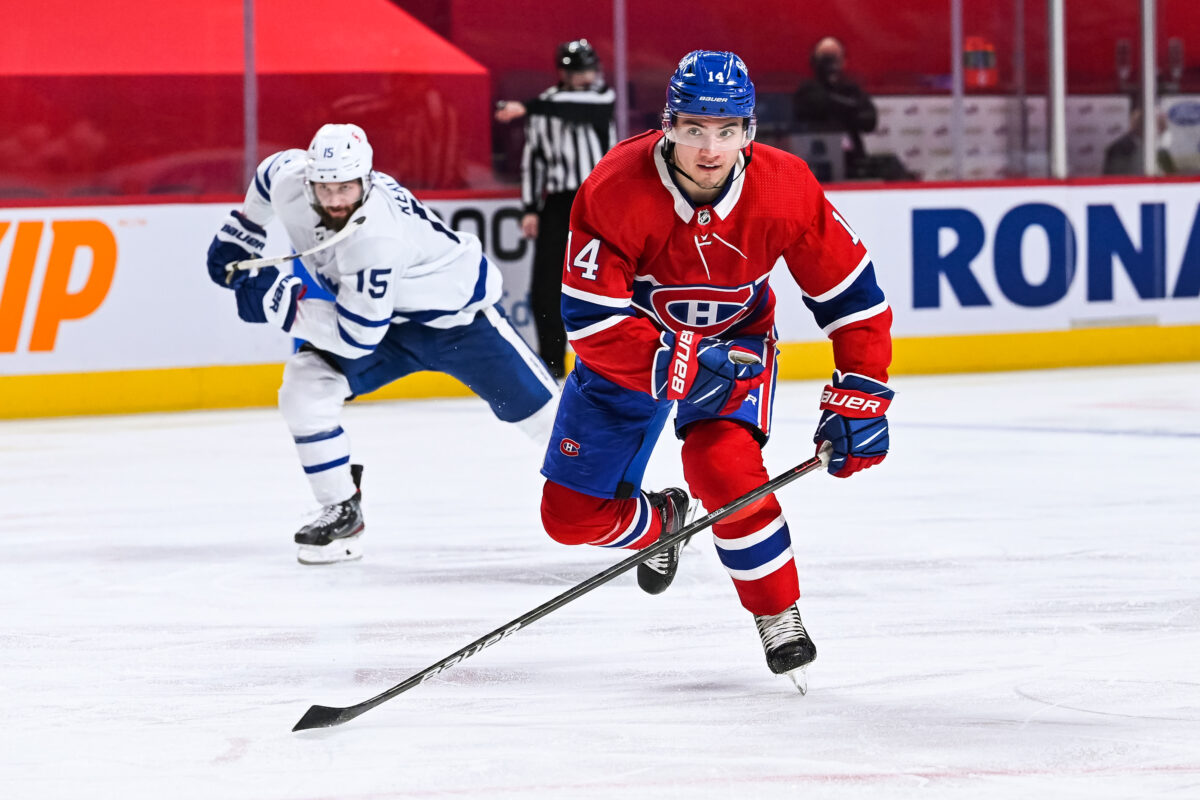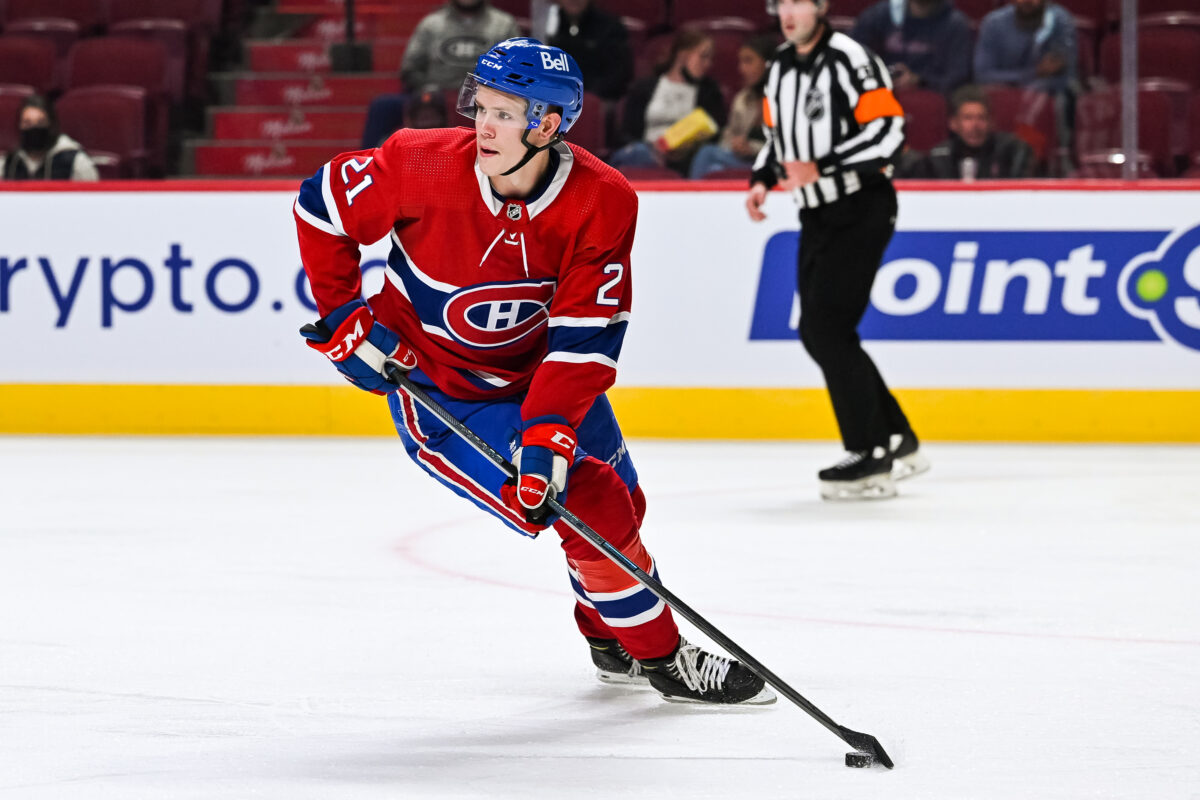The Montreal Canadiens’ rebuild is two full seasons into its arc. General manager (GM) Kent Hughes arrived with a plan, and fans expected that it would take time. It needs to be repeated, you don’t complete a genuine rebuild in 18 months. It will take patience because they are starting from scratch by building the tools they need to execute their plans. By hiring more scouts, building analytics and player development departments and implementing individual development plans. The future looks good, even though the present doesn’t.
Related: Canadiens Can Be Buyers at 2024 Trade Deadline
The Canadiens’ rebuilding efforts aren’t just tanking to ensure a high draft position. It involves shrewd salary cap and asset management. Be it with draft picks, young prospects or veterans who could benefit from a change of scenery. Is it enough? What does it take to be a contender? Do they have any of those pieces? Can they get the missing ones soon? There are several questions, and this series will explore them.
Canadiens Search for Contender Status
The Canadiens are in a very difficult division with established clubs, contending teams, and several others in different stages of rebuilds. While the Canadiens’ rebuild is unique to their wants and needs to create their own personality, they cannot ignore what their competition is doing as they do have to add pieces to compete against them. Pieces like Nick Suzuki who can play a matchup role against top lines and still be a nearly point-per-game center.

Yet, to judge a rebuild, first, we need to define what Stanley Cup contending teams need to have that gives them that status. There are seven needs, which add up to 11 skaters and one goaltender.
- An elite forward, preferably a center
- Two top-line players
- Three productive top-six forwards that play a two-way game
- A strong third-line center
- A top-pair defenceman that eats minutes in every situation
- Three mobile top-four defencemen, one being a power play (PP) specialist
- A reliable starting goaltender
While having these needs met means they have the talent to compete, to truly become a contender they also need depth. Now to go over this checklist and compare it to what is in Montreal’s system.
Canadiens Puzzle
Strong teams aren’t built overnight; they’re forged through mutual respect, operational competence, personal resilience, and support for one another. Trust is the cornerstone of their success, and it is built using a team culture of accountability and support.
The Canadiens haven’t yet completed their rebuild, and still need to fill some specific needs, like adding an elite offensive talent, if they hope to be considered a contender one day, but they are making huge strides. They secured the first-overall pick in 2022 after a major fall following their 2021 Stanley Cup Final appearance due to injuries, fatigue, age and several other reasons.
Using that 2022 first-overall pick, they selected Juraj Slafkovsky, who has been added to a line with Suzuki and Cole Caufield. This forms a legitimate top line. At that same 2022 Draft, Hughes completed a surprise trade, and acquired the 2019 third-overall pick, Kirby Dach, from the Chicago Blackhawks, adding a top-six center. Justin Barron, a potential second-pair defender, and Alex Newhook, a potential top-six winger, were also acquired in separate trades over the last two years with the Colorado Avalanche.
The 2022 Draft is starting to look transformative as it also provided more high-potential players in Owen Beck, a possible high-end third-line center, and Lane Hutson, a potential top-four defender who can transform a power play. Add in three more first-round picks in Kaiden Guhle, David Reinbacher and Logan Mailloux, and the Canadiens potentially have all their blue line needs met, especially as Montreal has one of the deepest pools of under-23 defencemen in the NHL. Add in Samuel Montembeault, and they have the starting goaltender they need, at least in the medium term.
Using the checklist, Hughes has:
- A top line
- Two of the three top-six players
- A possible third-line center
- A top pair capable defender
- A solid top four including a PP specialist
- A starting goaltender
Montreal is missing an elite talent and a top-six forward. They have been stockpiling top draft picks, four first-round picks over the 2024 and 2025 NHL Entry Drafts, and their 2024 first-round selection is very likely going to be a top 10 pick. Perhaps that top-10 pick will fill the need for an elite offensive player. Perhaps it will take a trade, as Montreal does have a plethora of picks and a deep prospect pool. But there is a major caveat to this checklist, player development. The majority of these players are under 24 years of age and will need a couple more seasons before they start to become what they were drafted to become.
The individual development approach adopted by the organization may feel slow, but for players like Slafkovsky and Guhle, there has been genuine progress in a short time. Playing their young players in increasingly larger roles is a strategy they have taken to heart and are also currently icing the second-youngest team in the NHL. Despite this inexperience, the team competes, works hard, and because of that can stay in games. This allows the youth to play in meaningful situations. Once Montreal finds consistency in its play and adds some skilled depth, they will become a strong playoff contender.

Another piece of this contender puzzle is team depth. Montreal’s system is full of “safe picks”, players that, when they were selected, were seen as almost certain NHL talent, but not anyone that was expected to push for a top role. Players like Filip Mesar, Joshua Roy, Jayden Struble, Jordan Harris, Adam Engstrom, Oliver Kapanen, Luke Tuch, and several others are all examples of players that can fill a depth role, such as a third-line player or bottom-four defender. Their additions can add the depth contenders need, but also act as trade chips if Hughes hopes to fill a team need quickly. Roy’s play since his call-up is evidence of this, his seven points in 17 games, while providing steady two-way play, will be his ticket to a permanent third-line role. However, to return to the most important factor in any rebuild, development is essential.
In a hockey market as intense as Montreal, fans are not always willing to be patient, and this is a reality that teams like the Canadiens must contend with. Navigating that may be Hughes’ biggest challenge. The rebuild is far from over, and there will be more growing pains before Montreal can become a contender.
